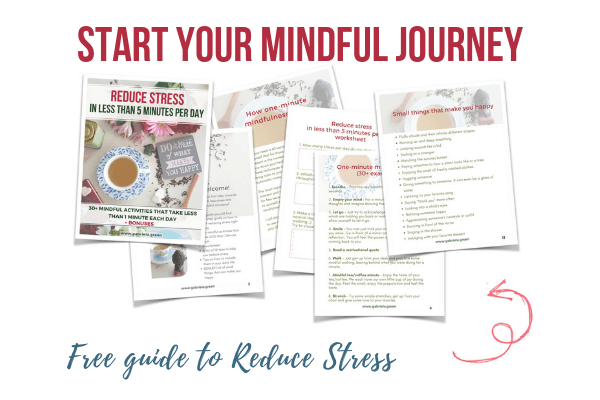
In the chaotic whirlwind of college life—where deadlines multiply faster than laundry and sleep becomes an elusive luxury—students are discovering a powerful ally in mindfulness practices. These aren’t just trendy wellness buzzwords; they’re scientifically-backed techniques that can transform how you handle the academic pressure cooker.

Let’s face it: college stress is reaching epidemic proportions. According to the American Psychological Association, 87% of college students report feeling overwhelmed by their responsibilities, while 45% say stress has negatively affected their academic performance. Between juggling classes, part-time jobs, internships, and attempting to maintain some semblance of a social life, it’s no wonder students are feeling the squeeze.
As one frazzled sophomore put it: “My typical day looks like mainlining caffeine while simultaneously writing a paper, texting my group project team, and wondering if I remembered to eat breakfast. Spoiler alert: I didn’t.”
When academic pressures mount and essay deadlines loom, many students turn to professional academic writing services like StudyCreek for assistance with research papers, essays, and other assignments. Having reliable support for the academic workload can significantly reduce stress and create more space for self-care practices like mindfulness.

Before diving into specific techniques, let’s demystify mindfulness. At its core, mindfulness means paying attention to the present moment—without judgment or distraction. It’s about acknowledging your thoughts and feelings without letting them hijack your mental state.
Think of mindfulness as mental fitness. Just as you might hit the gym to strengthen your physical muscles, mindfulness exercises strengthen your mental muscles, particularly those involved in attention regulation and emotional processing.

Breathing is something we do automatically, but conscious breath counting transforms this simple act into a powerful mindfulness tool:
This practice has been shown to reduce test anxiety and improve concentration—crucial benefits when you’re cramming for finals. According to a study in the Journal of Cognitive Enhancement, just 10 minutes of breath counting improved attention and working memory in college students.
When your roommate is blasting music and the walls feel like they’re closing in, visualization offers an instant escape:
One student described this technique as “like having a trap door in my mind that I can escape through whenever campus gets too overwhelming.”
Think of the body scan as running a diagnostic check on your physical operating system:
This practice is particularly helpful before sleep or after long study sessions when your shoulders have permanently fused with your ears.
Don’t let the name intimidate you—Zen meditation is surprisingly accessible:
As one engineering student joked, “My mind has more tabs open than my Chrome browser, but Zen meditation helps me force-quit the unnecessary ones.”
Those group projects testing your patience? Try this:
It won’t magically make your classmates more reliable, but it might prevent you from plotting their demise during the next group meeting.
Choose a word or phrase that resonates with you:
As one literature major put it: “My mantra got me through writing my thesis. It was simply ‘This too shall pass’—which works for both panic attacks and final exams.”
When even mantras aren’t enough to tackle challenging assignments, services like StudyCreek offer professional essay writing assistance that can help students maintain balance and mental well-being while ensuring academic success.
Can’t sit still? Walking meditation might be your perfect match:
This practice combines physical activity with mindfulness—perfect for those restless study breaks when you need to move but also center your thoughts.
Transform mindfulness into a creative outlet:
This technique is particularly popular among art and design students, but even the most scientifically-minded individuals can benefit from this creative expression of gratitude.

Let’s be real—sometimes you don’t even have 10 minutes to spare. These ultra-quick techniques can be squeezed between classes or while waiting in the coffee line:
Take 60 seconds to notice five things you can see, four things you can touch, three things you can hear, two things you can smell, and one thing you can taste. This rapid sensory inventory grounds you instantly in the present moment.
When overwhelm hits:
This four-step process takes less than a minute but can prevent hours of stress-induced productivity loss.
This yogic technique involves breathing through alternating nostrils:
According to research from the International Journal of Yoga, this technique can lower heart rate and blood pressure in as little as five minutes—perfect for pre-exam jitters.
Finding balance between rigorous academic demands and self-care isn’t easy. When essay deadlines approach and research papers loom, many students find relief by using professional academic writing services like StudyCreek. By delegating some of the academic workload, students create the mental space needed to practice mindfulness techniques and maintain overall well-being.
As one junior psychology major explained: “Sometimes outsourcing an essay to the experts at StudyCreek gives me the breathing room I need to actually practice the self-care that professors are always preaching about. It’s about working smarter, not harder.”
This isn’t just feel-good advice—research strongly supports mindfulness for academic settings. A 2018 study published in the Journal of American College Health found that students who practiced mindfulness reported:
These benefits directly translate to academic performance, with mindful students showing improved concentration, better information retention, and more creative problem-solving abilities.

Ready to give mindfulness a try? Start small:
Remember the golden rule of mindfulness: consistency trumps duration. Five minutes daily is more beneficial than an hour once a week.
As one psychology professor eloquently put it: “Mindfulness isn’t about achieving perfect calm—it’s about noticing when you’re not calm and having tools to return to center.”
In a world where student burnout is increasingly common, these simple mindfulness practices offer an evidence-based approach to managing the unique pressures of college life. Combining mindfulness techniques with strategic use of academic resources like StudyCreek creates a comprehensive approach to student success—nurturing both mental well-being and academic achievement simultaneously.
So the next time you’re facing the perfect storm of midterms, relationship drama, and an empty refrigerator, remember that you have powerful tools at your disposal: mindfulness for your mental state, and trusted academic partners for your educational journey.
Delivering a high-quality product at a reasonable price is not enough anymore.
That’s why we have developed 5 beneficial guarantees that will make your experience with our service enjoyable, easy, and safe.
You have to be 100% sure of the quality of your product to give a money-back guarantee. This describes us perfectly. Make sure that this guarantee is totally transparent.
Read moreEach paper is composed from scratch, according to your instructions. It is then checked by our plagiarism-detection software. There is no gap where plagiarism could squeeze in.
Read moreThanks to our free revisions, there is no way for you to be unsatisfied. We will work on your paper until you are completely happy with the result.
Read moreYour email is safe, as we store it according to international data protection rules. Your bank details are secure, as we use only reliable payment systems.
Read moreBy sending us your money, you buy the service we provide. Check out our terms and conditions if you prefer business talks to be laid out in official language.
Read more